Ijraset Journal For Research in Applied Science and Engineering Technology
- Home / Ijraset
- On This Page
- Abstract
- Introduction
- Conclusion
- References
- Copyright
A Review on IoT Based Health Monitoring System
Authors: Mr. Mayur Badole, Ms. Pallavi Bagde, Ms. Karishma Madame, Ms. Reshma Ninawe, Ms. Akansha Wasnik, Prof. Mirza Moiz Baig, Prof. Supriya Sawwasere
DOI Link: https://doi.org/10.22214/ijraset.2022.43138
Certificate: View Certificate
Abstract
Today, heart disease is considered one of the leading causes of untimely death. Thus, engineers have developed a variety of therapeutic devices to diagnose and evaluate various diseases. Health care has become one of the most important issues for both individuals and governments due to rapid population growth and medical costs. Many patients suffer from cardiovascular complications that cause serious threats to their health, so they need constant monitoring with a traditional monitoring system such as Electrocardiographic (ECG) which is a very important method used to measure cardiac output, this procedure is available only for the most expensive and remote hospital for remote patients. The development of wireless technology enables the construction of a network of Internet-connected devices. The proposed ECG monitoring system consists of the AD8382 ECG sensor for reading patient data, the ESP8266 Wi-Fi control module, and the IoT Blynk application. The implementation of the proposed ECG health care system enables the physician to monitor the patient remotely using the IoT Blynk program installed on his smartphone to monitor and visualize the patient\'s ECG signal. The monitoring procedure can be performed anytime and anywhere without the need for a hospital.
Introduction
I. INTRODUCTION
Health care is a major area that requires constant vigilance. Continuous measurement of patient parameters such as heart rate and rhythm, respiratory rate, blood pressure, oxygen saturation and, and many other parameters has become a common feature used in major health care systems. When precise and speedy decision-making is essential, electronic monitors are widely used to collect and display body composition data. There are also cases where a patient is not ready to wait in line and be appointed for regular checkups and monitoring. Often a patient monitoring system detects and warns of serious or life-threatening events in patients or critically ill patients. A patient monitoring program can be strictly defined as a continuous or continuous monitoring of a patient's body function, as well as the function of life support equipment, for the purpose of directing management decisions.
The project introduces wearable, portable, low power consumption, real-time bio-real-time signal monitoring system. This initiative provides an advanced step for the remote healthcare sector. The number of people, who need health care is increasing every year and standard bio-signals monitoring systems require that patients be present within hospitals. This may result in poor patient care, especially for those with serious health problems. Therefore, internet technology and modern electronic devices can provide promising solutions in this field. Based on that, the project uses the mobile application as an IoT platform to remotely monitor live ECG signal, heart rate, SPO2, and patient body temperature. Signals are measured and processed using a microcontroller-based device (NodeMCU). The main contribution of this paper is to send an electrocardiogram (ECG signal) to a specific smart phone for medical attention. This helps diagnose heart disease before it gets worse. Finally, the results obtained for this project are displayed on the smartphone.
II. DISCUSSION
IoT-based health monitoring programs by Naina Gupta et al. put forward a framework aimed at solving the problem of time wastage during ambulance services and hospitals, forcing data transmission via GSM module via Bluetooth technology. Regular medical examinations and monitoring of various body parameters with the help of different sensory connections are the main focus. They are focused on developing a small-size wearable system that can transfer data via GPRS to custom networks [1].
Internet of Things (IoT) ECG Monitoring System for most patients M. Ryan Fajar Nurdin, Sugondo Hadiyoso and Achmad Rizal have introduced a prototype that is forced to work only in transmitting Electrocardiographic signals using a zigbee without a cable. By attaching different sensors to different nodes in the body, they collect a series of data in an analog form and make a web application to display appropriate readings according to patients. Their application has a limit of only 20 users and the data contains a separate issue of bandwidth that causes errors in the proposed result [2]. The Novel IoT Based Health Monitoring System Using Melisa Pereira's LPC2129 by Nagapriya Kamath K attempts to solve the problem of wireless data transmission by considering the percentage of body fat and heart rate as her main factor. To get the proposed solution, use the Arm 7 processor that works on data transfer over WiFi. The whole system seems to be limited due to the use of technology that does not support such long-term communication [3]. Smart Health System: Monitoring the Physiological Conditions of a Patient in Comatose Remote by Tati Erlina et al. developed a program focused on resolving the patient's physical condition by monitoring heart rate, respiratory rate and eyelid condition. This complete app is designed to send data to the Android app on the cell phone where the app is being used to show different read-by-measure readings. But the solution has failed to capture system security and put important data at risk [4].
IoT Based Health Monitoring System uses Ashwini Gatte et.al's Raspberry Pi has developed a fitness tracking system based on IoT for older people where he uses different parameters of glucose Body, Blood Pressure, Heart Beat Rate and activity monitoring etc., using the Raspberry Pi. Gatte also used an ECG (Electrocardiogram) for heartbeat and other ailments. He also proposed different IoT protocols that could be used in this type of system [5].
IoT Soldiers' Health Monitoring and Tracking System by Niket Patil et.al has worked on a program to monitor fitness and capture of IoT soldiers. Patil proposed about monitoring using sensors such as the LM35, Pulse Rate Sensor and Oxygen spotter sensor system and for the purpose of tracking, they use the most accurate GPS SIM28M to track a soldier's location. The entire system is connected to the Internet using the Node MCU ESP 8266 wifi module and includes an alarm button for emergency assistance. And the whole system is less expensive and the sensors are connected to the Arduino Uno (ATMega 328p) as the MCU Board [6].
The IoT Based Patient Monitoring System Using Kumar et.al's Raspberry PI uses Raspberry Pi and nerves to monitor a patient's body temperature, heart rate, body movements and respiratory rate. Here the IR transmitter and receiver are used to monitor heart rate. In this system you use conventional circuitry or a basic electronics system to set up the system as an amplifier to maximize system efficiency as signal transmission from a distance can lead to a reduction in that part used. The Transformer is specifically used to deliver 230 V power to convert to 9 volt and 5 volt and here the SMPS * Switched Power Mode) is also used because each sensor has a different input [7]. An Effective Wireless Health Monitoring Program by Chowdhary et. al proposed a system with a GSM module connected to the Raspberry Pi assembly for various sensory health monitoring. This program focuses on direct transmission of health data through direct messages to your Doctor's phone. They intended to make it easier and thus reduce the burden on hospitals to hire patients. They obtained a speed of 20 seconds per reading to update the revised value and to store the data in the system [8]. Dengue Wireless Patient Monitoring Program; Wi-Mon This program was developed by Nubenthan and Ravichelvan using a WBAN wireless interface using IEEE 802.15.4j and IEEE 802.15.6 standards. They disassembled the computer hardware and used Wi-Mon software to collect data on different sensors. This information gives an idea of ??the patient's seriousness in any disease such as Dengue. Collection of important information such as body temperature, heart rate, ECG, oxygen saturation and blood pressure is used as a basic health monitoring tool for Wi-Mon software [9].
Health Care Monitoring System and Converting monitored Data into Real-Time data as IoT-Based Clinical Data Using Raspberry Pi. Khan R al worked on a combination system of Arduino Uno and Raspberry Pi. They collected all the data with arduino on all the sensors and then used the raspberry pi to shoot video. Using a local server, they created a learning hub that is updated every 2 minutes. This program was proposed to address the problems of older groups and patients who do not regularly visit a physician [10].
III. BLOCK DIAGRAM
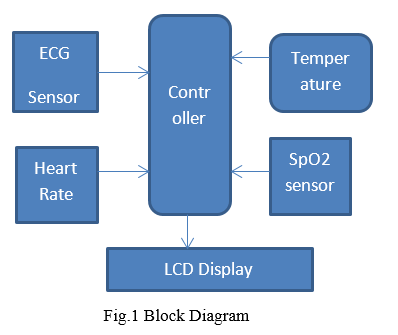
Proposed system consist of ECG sensor, heart beat sensor, temperature sensor and Spo2 sensor.
ECG (electrocardiography) is a method of collecting electrical signals generated by the heart. This allows us to understand the level of physiological arousal that someone is experiencing, but it can also be used to better understand someone's psychological state.
Heartbeat Sensor is an electronic device that is used to measure the heart rate i.e. speed of the heartbeat. Monitoring body temperature, heart rate and blood pressure are the basic things that we do in order to keep us healthy.
SpO2 sensors detect changes in your oxygen levels by looking at the colors of your blood. It uses the way light passes through your finger to measure the volume of oxygen in your blood and sends the information to the device's screen, which displays the amount of oxygen in your blood. Temperature sensors are vital to everyday life. These important pieces of technology measure the amount of heat an object or system is giving off. The measurements given allow us to physically sense a change in temperature. One important role of temperature sensors is prevention. Temperature sensors detect when a set high point occurs which allows time for preventative action. These sensors values will be read by controller and displayed that value on LCD display.
The system is connected to the IOT device via Wi-Fi of controller. The controller used is NodeMCU which has in built Wi-Fi system. All sensors value can be monitor from distance or remote place using IOT Blynk application. In case of high fever or low pulse rate a notification is generated and can be seen on Blynk application.
IV. METHEDOLOGY
It is a co-design methodology based system. We are using hardware and software both simultaneously to perform patient health monitoring system. As we have to design IOT system, we need a controller with Wi-Fi connectivity. So we select ESP8266 based NodeMcu. It will connected to sensors and LCD display. We will use Blynk IOT cloud for monitoring and controlling interface. NodeMCU will read data from temperature sensor DS18b20 with one wire protocol and upload data to iot cloud. After this controller will read data from other sensors one by one and upload data to iot cloud. On getting all parameter, we can monitor it via mobile application. We will use Blynk IOT cloud for monitoring and controlling interface. These all sensor will connect to the Node MCU controller which will take sensors data and provided it to the LCD interfaced module. Node MCU controller has inbuilt Wi-Fi facility to connect with internet and give access to IOT devices. Blynk application will use to connect mobile or laptop to IOT. This application provide user interface to monitor different parameters from remote distance NodeMCU will read data from temperature sensor DS18b20 with one wire protocol and upload data to IOT cloud. After this controller will read data from other sensors one by one and upload data to IOT cloud. On getting all parameter, we can monitor it via mobile application.
V. WORK FLOW
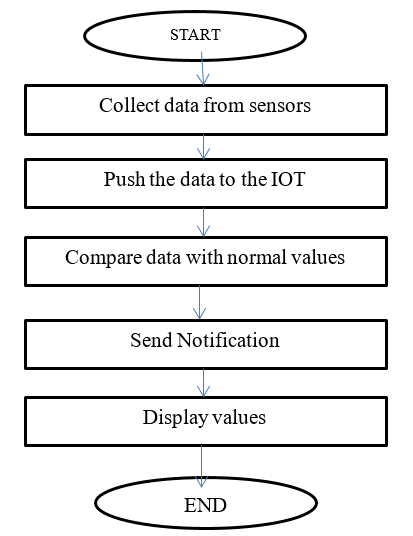
Working principle: controller will collect values from sensors and displayed on LCD display. If there is any value beyond the threshold or normal value then a notification will generate and given to the user. The system is connected to the IOT device via Wi-Fi of controller. The controller used is NodeMCU which has in built Wi-Fi system. All sensors value can be monitor from distance or remote place using IOT Blynk application.
VI. COMPONENTS
A. NodeMCU Controller
The ESP8266 NodeMCU CP2102 board has ESP8266 which is a highly integrated chip designed for the needs of a new connected world. It offers a complete and self-contained Wi-Fi networking solution, allowing it to either host the application or to offload all Wi-Fi networking functions from another application processor.
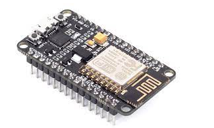
B. Temperature Sensor
Temperature sensors are vital to everyday life. These important pieces of technology measure the amount of heat an object or system is giving off. The measurements given allow us to physically sense a change in temperature. One important role of temperature sensors is prevention. Temperature sensors detect when a set high point occurs which allows time for preventative action.
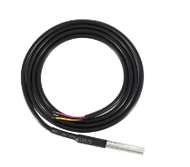
C. Heart Rate Sensor/ SpO2 Sensor
Heartbeat Sensor is an electronic device that is used to measure the heart rate i.e. speed of the heartbeat. Monitoring body temperature, heart rate and blood pressure are the basic things that we do in order to keep us healthy.
SpO2 sensors detect changes in your oxygen levels by looking at the colors of your blood. It uses the way light passes through your finger to measure the volume of oxygen in your blood and sends the information to the device's screen, which displays the amount of oxygen in your blood.
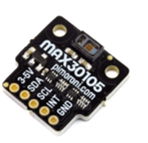
D. LCD
This is LCD2004 Parallel LCD Display that provides a simple and cost-effective solution for adding a 20×4 White on RGB Liquid Crystal Display into your project. The display is 20 character by 4 line display that has a very clear and high contrast white text upon a blue background/backlight.
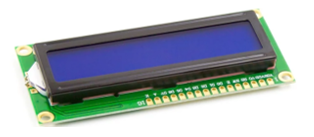
E. ECG Sensor
ECG (electrocardiography) is a method of collecting electrical signals generated by the heart. This allows us to understand the level of physiological arousal that someone is experiencing, but it can also be used to better understand someone's psychological state.

Conclusion
This paper aims to design an ECG health care system based on IoT for patients suffering from cardiovascular problems. The system uses the Blynk IoT system which is a free application that doctors will use to monitor the heart condition of their patients. The great power points of our proposed system are easy to connect and use by anyone, can be carried anywhere, used remotely, inexpensive, and easily installed. This system can be improved in the future by increasing the number of ECG sensor electrodes for more accurate results, and can be extended by adding additional sensors to measure other systems such as blood pressure and heart rate. Creating a cloud database will be very effective in maintaining patient health information that includes a patient\'s health history, however, each time a physician performs a new ECG reading the data it will be stored directly in the patient\'s record in the database, and then it may be analyzed. And the doctor can send a counseling report to the patient.
References
[1] N Gupta, H Saeed, S Jha, M Chahande, S Pandey. IOT based health monitoring systems, International Conference on Innovations in Information, Embedded and Communication Systems (ICIIECS), Amity Institute of Telecommunication Engineering and Management. Amity University Uttar Pradesh, Noida, India, 2017. [2] MRF Nurdin, S Hadiyoso, A Rizal. A Low-Cost Internet of Things (IoT) System for Multi-Patient ECG’s Monitoring, International Conference on Control, Electronics, Renewable Energy and Communications (IEEE- ICCEREC), ISBN:978-1- 5090-0744-8/16/2016. [3] M Pereira, N Kamath. A Novel IoT Based Health Monitoring System Using LPC2129”, 2017 2nd IEEE International Conference on Recent Trends in Electronics Information & Communication Technology (IEEE - RTEICT), India, ISBN: 978-1-5090-3704- 9/17/2017 [4] T Erlina, MR Saputra, RE Putri. A Smart Health System: Monitoring Comatose Patient\'s Physiological Conditions Remotely, International Conference on Information Technology Systems and Innovation (ICITSI) Bandung - Padang. 10, 2018. ISBN: 978-1- 5386-5692-1 [5] A Gutte, R Vadali. IoT Based Health Monitoring System Using Raspberry Pi,\" 2018 Fourth International Conference on Computing Communication Control and Automation (ICCUBEA), Pune, India, 2018, 1-5, doi:10.1109/ICCUBEA.2018.8697681 [6] N Patil, B Iyer. Health monitoring and tracking system for soldiers using Internet of Things(IoT), International Conference on Computing, Communication and Automation (ICCCA), Greater Noida, 2017, 1347-1352.doi: 10.1109/CCAA.2017.8230007 [7] R Kumar, MP Rajasekaran. An IoT based patient monitoring system using raspberry Pi, International Conference on Computing Technologies and Intelligent Data Engineering (ICCTIDE\'16), Kovilpatti, 2016, 1-4. doi: 10.1109/ICCTIDE.2016.7725378 [8] KC Chowdary, KL Krishna, KL Prasad, K Thejesh. An Efficient Wireless Health Monitoring System, Proceedings of the Second International conference on I-SMAC (IoT in Social, Mobile, Analytics and Cloud) (I-SMAC 2018) IEEE Xplore Part Number: CFP18OZV-ART; ISBN: 978-1-5386-1442-6 [9] I Khan, K Zeb, A Mahmood, W Uddin, MA Khan, SIslam. A Wireless Continuous Patient Monitoring System for Dengue; WiMon, International Conference on Computing, Mathematics and Engineering Technologies – IEEE-iCoMET 2019, ISBN: 978-1- 5386-9509-8/19. [10] S Nubenthan, K Ravichelvan. A Wireless Continuous Patient Monitoring System for Dengue; Wi-Mon, IEEE WiSPNET 2017 conference. ISBN: 978-1-5090-4442-9/17.
Copyright
Copyright © 2022 Mr. Mayur Badole, Ms. Pallavi Bagde, Ms. Karishma Madame, Ms. Reshma Ninawe, Ms. Akansha Wasnik, Prof. Mirza Moiz Baig, Prof. Supriya Sawwasere. This is an open access article distributed under the Creative Commons Attribution License, which permits unrestricted use, distribution, and reproduction in any medium, provided the original work is properly cited.
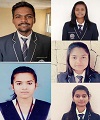
Download Paper
Paper Id : IJRASET43138
Publish Date : 2022-05-23
ISSN : 2321-9653
Publisher Name : IJRASET
DOI Link : Click Here
 Submit Paper Online
Submit Paper Online

